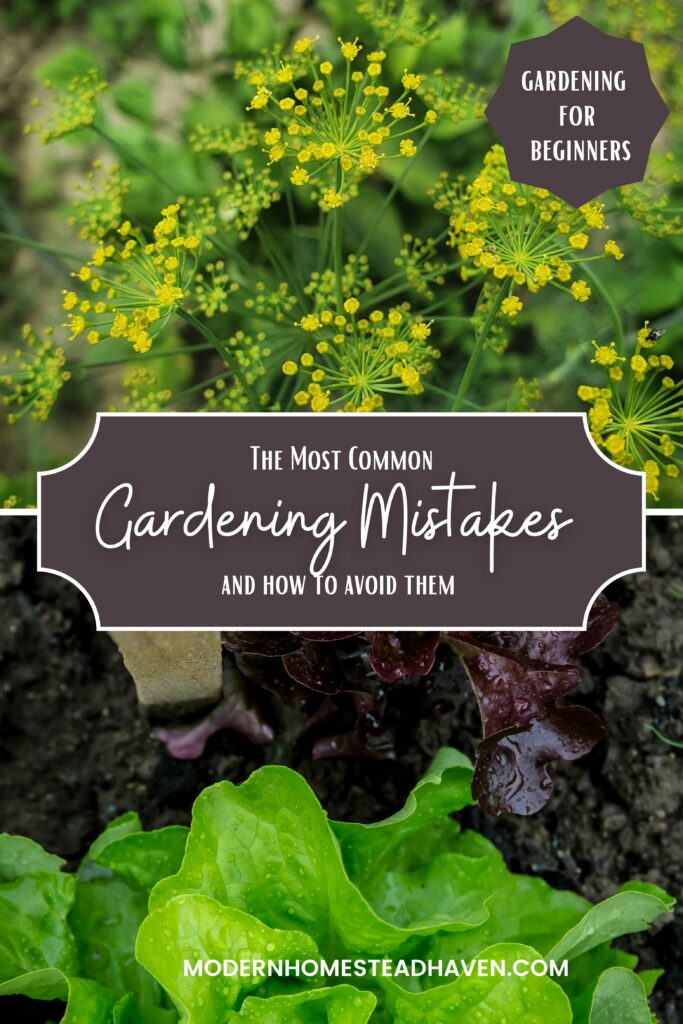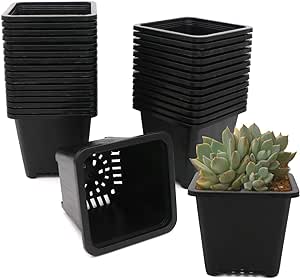Starting a garden can be incredibly fulfilling, offering not just a beautiful outdoor space, but also a real connection to nature and a sense of achievement. But, like anything new, gardening has its challenges, especially if you’re just starting out. Things like watering too much or not enough, neglecting the soil, or not giving your plants enough space can really hold your garden back. That’s why it’s important to know about these common gardening mistakes to avoid. In this guide, we’ll talk about ten simple garden mistakes to stay away from. By knowing these, you’ll be better equipped to care for your plants and create a thriving garden that brings you joy all year round, whether you’re a seasoned gardener or just getting started.

- Not considering sunlight: Many plants have specific sunlight requirements. Make sure to research the plant you plan to grow to find out the sunlight requirements. Some plants prefer full sun, some prefer shade.
- Overwatering or underwatering: Finding the right balance of water is crucial for plant health. Overwatering can lead to root rot, while underwatering can cause wilting and stunted growth. Learn the water needs of your plants and adjust accordingly.
- Ignoring soil quality: Good soil is essential for healthy plant growth. Test your soil for pH and nutrient levels and amend it as needed with organic matter such as compost or fertilizer.
- Planting too close together: While it might be tempting to maximize space, overcrowding plants can lead to competition for nutrients, water, and sunlight. Follow spacing recommendations to ensure proper growth and airflow between plants.
- Neglecting pest control: Pests can quickly damage or destroy your plants if left unchecked. Keep an eye out for signs of pest infestation and take preventative measures such as using companion planting, natural predators, or organic pesticides.
- Not mulching: Mulch helps retain moisture, suppress weeds, and regulate soil temperature. Apply a layer of mulch around your plants to improve overall garden health. While this step isn’t necessary – i strongly recommend it for fruits such as raspberries, blackberries, and strawberries.
- Not buying your seed from a quality source: All gardens start at the same stage: seeds. Buying seeds from a known and trusted source will set you up for success. Even more so if you want to save your own seeds to use next year. I know and trust a few quality seed brands such as T & T Seeds and Seeds Now. Use this link to check out the wide variety of seeds Seeds Now offers!
- Ignoring plant hardiness zones: Different plants thrive in different climates. Make sure to choose plants that are suitable for your hardiness zone to increase their chances of survival – especially perennial plants.
- Not interplanting: Lets get rid of that idea that we can only grow the same kind of plants near each other. Certain plants are companions that can benefit each other in a range of methods. Interplanting can help reduce the spread of disease and pests while bringing beneficial insects in.
- Planting seeds once per season: Many garden vegetables such as carrots, lettuce, beets, peas etc.. are good options to plant mid summer once harvest has begun for that plant. This ensures a harvest later in the summer and into the fall.
- Not starting the appropriate seeds indoors: Some plants will benefit from being started indoors and transplanted in the garden once the weather allows and they have sufficient growth. Starting seeds indoors is a great tool for those of use that live in cooler climates and shorter growing zones. Tomatoes, peppers, berries, broccoli, cauliflower, herbs, and some flower varieties are recommended to start indoors for my growing zone – and that’s just what I do. Make sure you harden off any plants started indoors!
- Not providing support for vertical growth: Many plants, such as tomatoes, cucumbers, and peas, require support for vertical growth to prevent them from sprawling on the ground and to promote better airflow and sunlight exposure. Invest in trellises, stakes, or cages to support these plants as they grow.
We all have our tips and tricks when it comes to the garden – the point is to find what works for you. But to do that – you must experiment. For instance, when I transplant any plant into the garden, I dig the hole way too deep then fill it half way with compost and water before placing my tomato plant (or whatever I’m transplanting) into the hole. This works for me because it gives my plants that little boost that they need in their new home.
TOOLS
Every gardener needs tools. Nothing fancy – just enough to get the work done. In my garden ‘tool kit’ I have a trowel, neem oil, stakes, jute cord, hand weeding tool, snippers and pruners. I could list a whole bunch more but these are the things I find myself reaching for the most. If you plan to start seeds indoors you only need 4 things:
So, whether you’ve accidentally drowned your petunias, staged a tomato rebellion, or found yourself in a battle of wits with a stubborn weed, remember this: every wilted leaf, every withered stem, is just another day in your garden and there are thousands of others experiencing the same. Learning which gardening mistakes to avoid is just a part of the process! Gardens teach us patience, and if we’re patient, we’ll learn a little more each year. May your gardens flourish, your spirits bloom, and may your gardening escapades be the stuff of legend!
May your thumbs forever remain a delightful shade of green!
Happy Gardening!









